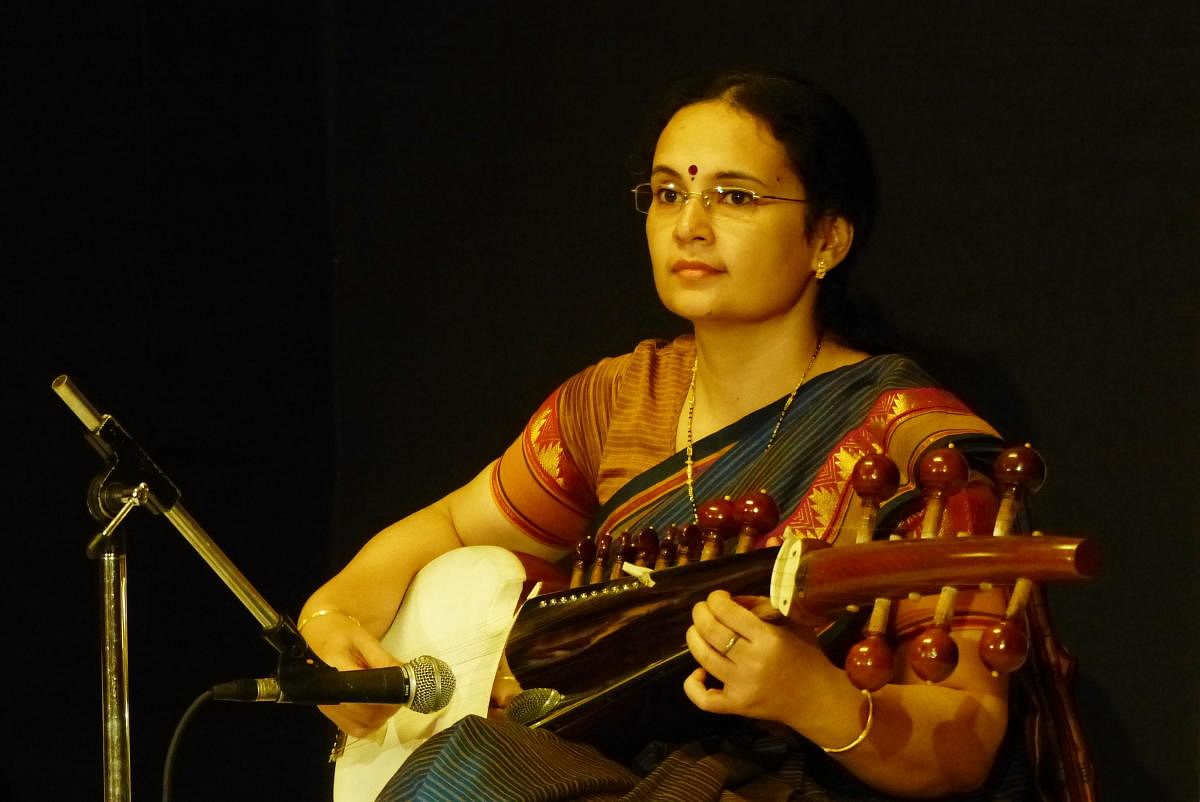
She belongs to the small tribe of professional women sarod players but Dr Chandrima Majumdar actually began her musical journey by learning Hindustani classical vocals. Today, she is recognised not only as a talented performer but also as someone with impressive practical knowledge as well as theoretical expertise. She has been performing on All India Radio and Doordarshan since a young age and has been featured as a performer at prestigious music festivals like the Sankatmochan in Varanasi, Saptak Festival of Ahmedabad, Pratibha Utsav of Sangeet Natak Akademi, and so on. Recipient of several awards, she has a doctorate in classical music from Bhatkhande Music Institute, Uttar Pradesh.
She is also an articulate speaker on the subject. Chandrima has given lecture demonstrations in the music departments of Delhi University, Mumbai University, and at various educational institutions in Lucknow including Lucknow University, and also the IIMs in Bengaluru, and Lucknow, among others. She is credited with establishing an academic course on sarod in the music department at Banasthali Vidyapith in Rajasthan.
Born into a traditional Bengali family, it was natural that she (like her other sibling, a sister) was initiated by her parents Shibani and Tapan Kumar Roy, into classical music and Rabindra Sangeet at a very young age. She grew up in Lucknow.
“I was home tutored by my mother in Hindustani classical vocal and later, from the age of 10 came under the tutelage of Dr Tej Singh Tak. He would come home and teach me every Sunday,” she reveals.
Talking of her vocal music training in her younger days, Chandrima reveals that she was somewhat frail as a child. So though her sur and taal were fine, her voice was rather feeble and her teachers/listeners would often ask her to come closer to them and sing so they could hear clearly, she recalls with a laugh.
Chandrima was around 13 when she attended a concert of the well-known sarod artiste Pandit Narendra Nath Dhar of Shahjahanpur Gharana: “I was immediately enchanted by the sarod and entreated my parents to let me learn this wonderful instrument.”
“After some persistence from me, they agreed, and fortunately, Panditji accepted me as his disciple at the Bhatkhande Institute where he was teaching. Perhaps the fact that I had training in vocal music weighed in my favour because I could imbibe the gaayaki angi (vocal aspects) of the sarod more easily.” Of course, she continued her vocal lessons alongside, and this was also encouraged by her guru, for the same reason. Today, Chandrima says she is grateful for this dual training when she receives appreciation for being at ease with both gayaki (vocal style) and tantrakari (instrumental style).
Later, she acquired an MA in Economics with distinction. She then took a teaching job at Banasthali Vidyapith in Rajasthan. “This is a residential and all-women institution and I established the sarod course and was thrilled to be able to train young girls in sarod.”
A Plan B is vital
Chandrima, who has high regard for her father, reveals that he gave her valuable advice about the importance of academics and a regular job. “He told me that it was wonderful to have the kind of passion for sarod which I had but it was also important to have sufficient academic success and financial security through a regular job as a Plan B in life before turning into a full-time professional musician. This ensures that you never feel bad if the music alone cannot sustain you financially.” Does she have any regrets about giving up a regular job to become a professional musician given how tough it is to flourish in this field? “No, I would never like to go back to a full-time job. No regrets at all.”
Does she feature in jugalbandis and collaborations frequently as many Indian classical musicians are tending to do? She replies: “No, I haven’t been able to play jugalbandis because the scale of the sarod doesn’t match with those of other instruments. Also, I don’t like to compromise on the deep resounding tone of the sarod just to match up to other instruments. I have done a few collaborative projects with Swiss jazz musicians, Japanese crossover musicians, and German contemporary musicians during my initial years of performance though I didn’t really enjoy the outcome; so I have kept away from fusion after that.”
Even as she teaches and performs, Chandrima nourishes dreams for her future projects. “My main aim is to carry forward the rich legacy of our Shahjahanpur Gharana. We give equal importance to the kriyas of both the right and left hand while playing the sarod. The elements of rabab are to be clearly seen in our gharana’s style. There is a judicious blend of both gayaki and tantrakari ang in the Shahjahanpur Baaj.”
Deccan Herald is on WhatsApp Channels| Join now for Breaking News & Editor's Picks